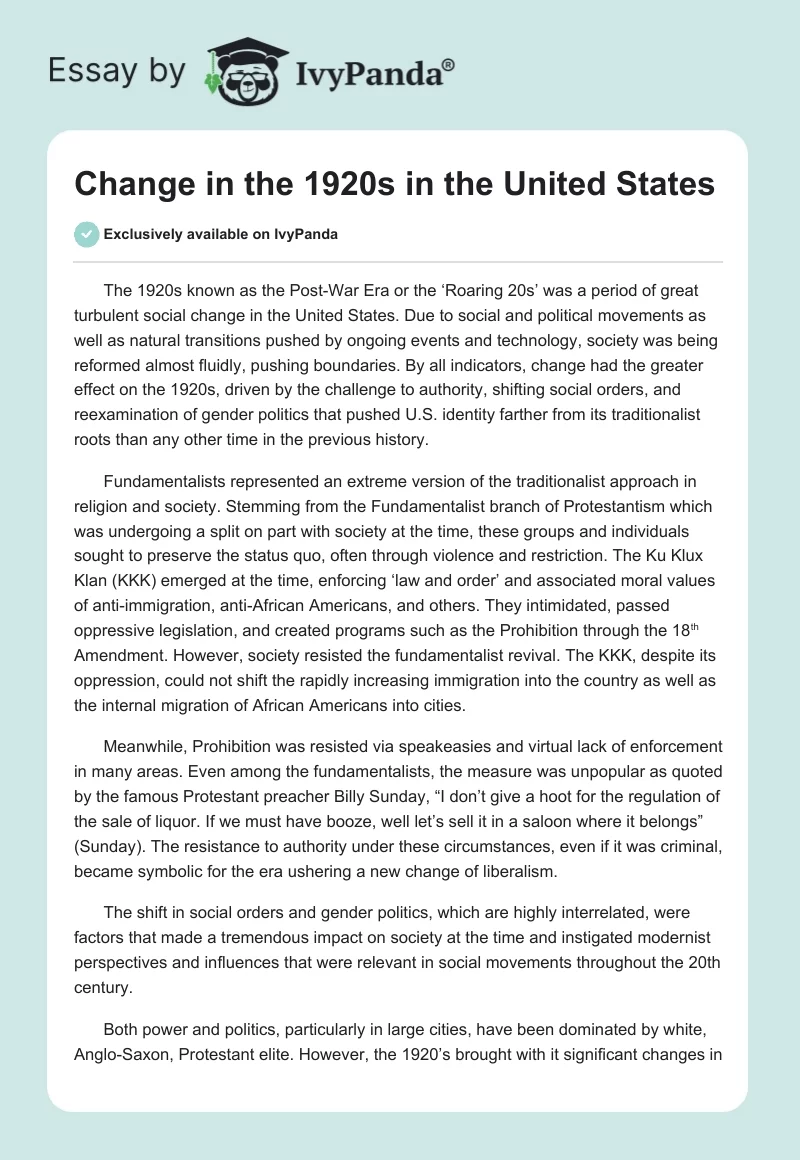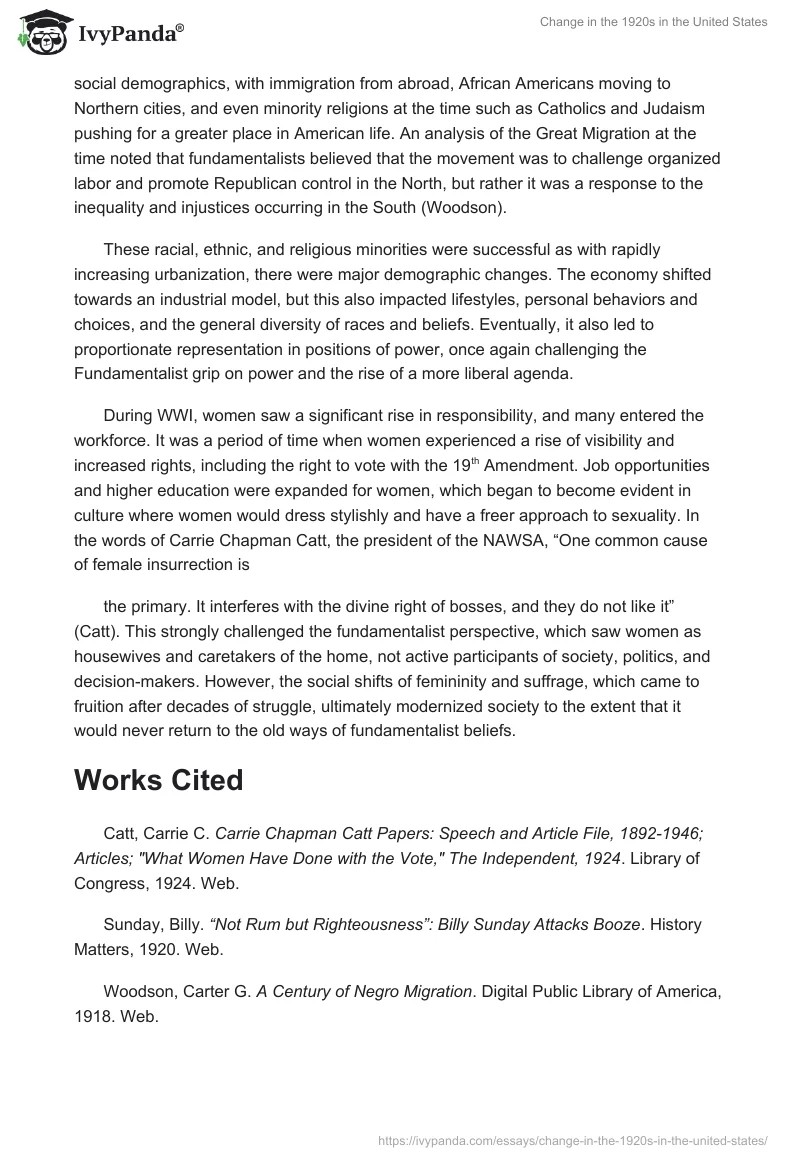The 1920s known as the Post-War Era or the ‘Roaring 20s’ was a period of great turbulent social change in the United States. Due to social and political movements as well as natural transitions pushed by ongoing events and technology, society was being reformed almost fluidly, pushing boundaries. By all indicators, change had the greater effect on the 1920s, driven by the challenge to authority, shifting social orders, and reexamination of gender politics that pushed U.S. identity farther from its traditionalist roots than any other time in the previous history.
Fundamentalists represented an extreme version of the traditionalist approach in religion and society. Stemming from the Fundamentalist branch of Protestantism which was undergoing a split on part with society at the time, these groups and individuals sought to preserve the status quo, often through violence and restriction. The Ku Klux Klan (KKK) emerged at the time, enforcing ‘law and order’ and associated moral values of anti-immigration, anti-African Americans, and others. They intimidated, passed oppressive legislation, and created programs such as the Prohibition through the 18th Amendment. However, society resisted the fundamentalist revival. The KKK, despite its oppression, could not shift the rapidly increasing immigration into the country as well as the internal migration of African Americans into cities.
Meanwhile, Prohibition was resisted via speakeasies and virtual lack of enforcement in many areas. Even among the fundamentalists, the measure was unpopular as quoted by the famous Protestant preacher Billy Sunday, “I don’t give a hoot for the regulation of the sale of liquor. If we must have booze, well let’s sell it in a saloon where it belongs” (Sunday). The resistance to authority under these circumstances, even if it was criminal, became symbolic for the era ushering a new change of liberalism.
The shift in social orders and gender politics, which are highly interrelated, were factors that made a tremendous impact on society at the time and instigated modernist perspectives and influences that were relevant in social movements throughout the 20th century.
Both power and politics, particularly in large cities, have been dominated by white, Anglo-Saxon, Protestant elite. However, the 1920’s brought with it significant changes in social demographics, with immigration from abroad, African Americans moving to Northern cities, and even minority religions at the time such as Catholics and Judaism pushing for a greater place in American life. An analysis of the Great Migration at the time noted that fundamentalists believed that the movement was to challenge organized labor and promote Republican control in the North, but rather it was a response to the inequality and injustices occurring in the South (Woodson).
These racial, ethnic, and religious minorities were successful as with rapidly increasing urbanization, there were major demographic changes. The economy shifted towards an industrial model, but this also impacted lifestyles, personal behaviors and choices, and the general diversity of races and beliefs. Eventually, it also led to proportionate representation in positions of power, once again challenging the Fundamentalist grip on power and the rise of a more liberal agenda.
During WWI, women saw a significant rise in responsibility, and many entered the workforce. It was a period of time when women experienced a rise of visibility and increased rights, including the right to vote with the 19th Amendment. Job opportunities and higher education were expanded for women, which began to become evident in culture where women would dress stylishly and have a freer approach to sexuality. In the words of Carrie Chapman Catt, the president of the NAWSA, “One common cause of female insurrection is
the primary. It interferes with the divine right of bosses, and they do not like it” (Catt). This strongly challenged the fundamentalist perspective, which saw women as housewives and caretakers of the home, not active participants of society, politics, and decision-makers. However, the social shifts of femininity and suffrage, which came to fruition after decades of struggle, ultimately modernized society to the extent that it would never return to the old ways of fundamentalist beliefs.
Works Cited
Catt, Carrie C. Carrie Chapman Catt Papers: Speech and Article File, 1892-1946; Articles; “What Women Have Done with the Vote,” The Independent, 1924. Library of Congress, 1924. Web.
Sunday, Billy. “Not Rum but Righteousness”: Billy Sunday Attacks Booze. History Matters, 1920. Web.
Woodson, Carter G. A Century of Negro Migration. Digital Public Library of America, 1918. Web.


